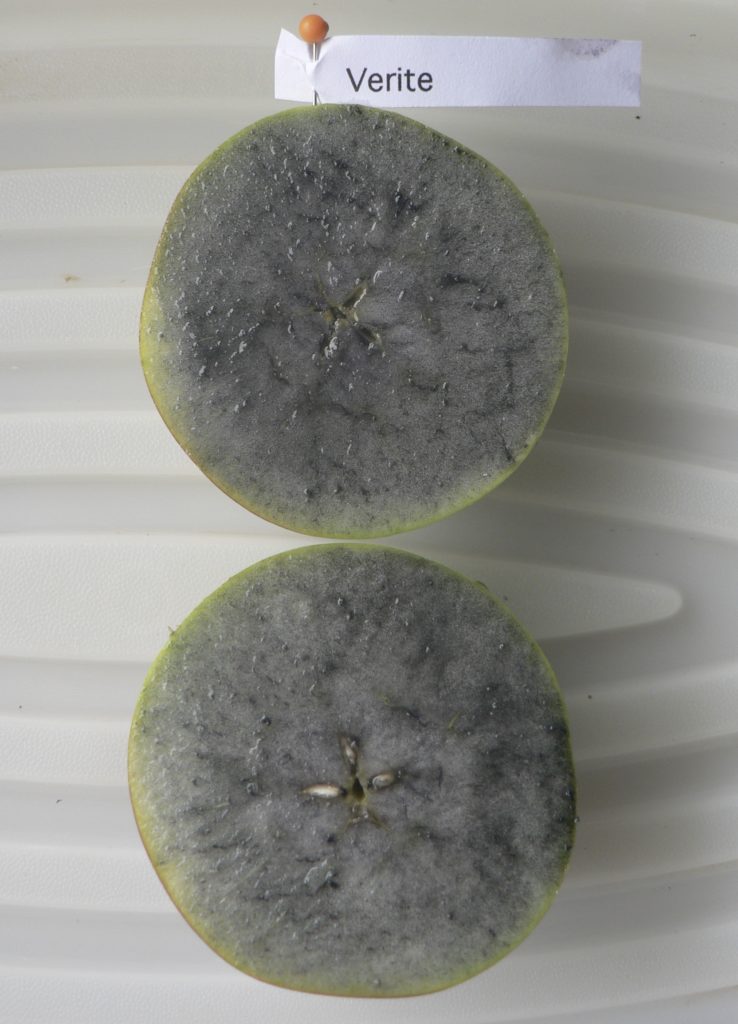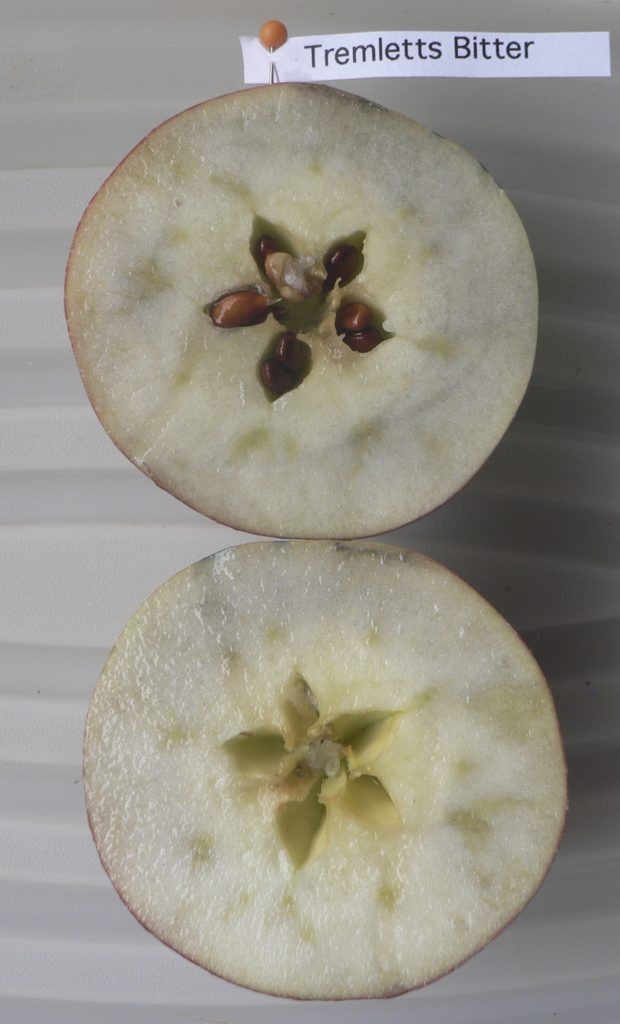How do you know when your apples are ‘ripe’ and ready for crushing? There are various ‘rules of thumb’ for assessing the maturity of cider apples in order to commence harvest. These range from the colour of the seeds to the proportion of fruit that has dropped off the tree.
Sampling the apples for juice and then determining the specific gravity of the juice can be useful. Essentially these tests give a guide to the sugar content of the apples. This can be done on a small scale by cutting segments from apples and squeezing the juice out, or with a punch that extracts a small juice sample. The sugar content of the juice can then be assessed using a refractometer. On a larger scale, multiple apples can be crushed and the sugar content of the resultant juice assessed using a hydrometer.
Working with the juice as indicated above is a guide, but it doesn’t necessarily prove that all the starch within the apple has been converted to sugars. Use of an iodine (I) & potassium iodide (KI) solution to detect starch is a very convenient way to not only detect starch but to determine how far the conversion of the starch to sugar has progressed.
With the the starch iodide test it is possible to assess the starch content of fruit visually: https://www.canr.msu.edu/uploads/files/Research_Center/SWMREC/Apple_Maturity_Protocol.pdf
The starch iodide test approaches the assessment from the opposite perspective to the juice sampling. A solution of potassium iodide and iodine in water is applied to a transversely cut surface of the apple to be tested. The degree of blackening will show whether starch remains unconverted and how much. The pattern of the blackening varies with the apple cultivar. An absence of black indicates that all the starch has been converted.
There will be variation with apples picked from the tree. How critical the assessment is will determine how many fruit should be sampled from the tree, high or low, shaded or sunny, north or south etc. Images with four halves have, on the left, an apple that had fallen to the ground.
This is also perhaps the time to mention an inherent difficulty with the apple sampling protocol. As the crop of any given cultivar’s apples ripen, an increasing number will fall to the ground and it is arguable that those apples remaining on the tree are probably by definition ‘less ripe’. Alternatively a fallen apple could have been squeezed off as other apples in its bunch expand. Depending on whether the crop is being hand picked or machine harvested will influence the decision to go ahead with harvest of that cultivar. Another old ‘rule-of thumb’ for deciding when to harvest was when 25-30% of the apples had fallen from the tree.
Bear in mind that not all producers will necessarily want to have apples going through to full ripeness. If the intended cider is to be made from 100% juice (ie no water dilution) and the target alcohol level is perhaps 4-5% it is likely that harvest will be initiated ahead of full apple ripeness.
Examples of the current season’s testing are linked below. Some of the images begin with two fruits and this was to try to capture the potential range/variation at the start of the sampling period. The fruit on the left was collected from the ground, that on the right from the tree. After that first sampling, all fruits were taken from the tree. The cultivars are listed in alphabetical order, not ripening order:
Sturmer Pippin is not thought of as a cider apple in its country of origin (Britain) but was a mainstay of the cider industry in Tasmania for many years and is still highly thought of for cider there and in other places within Australia.


